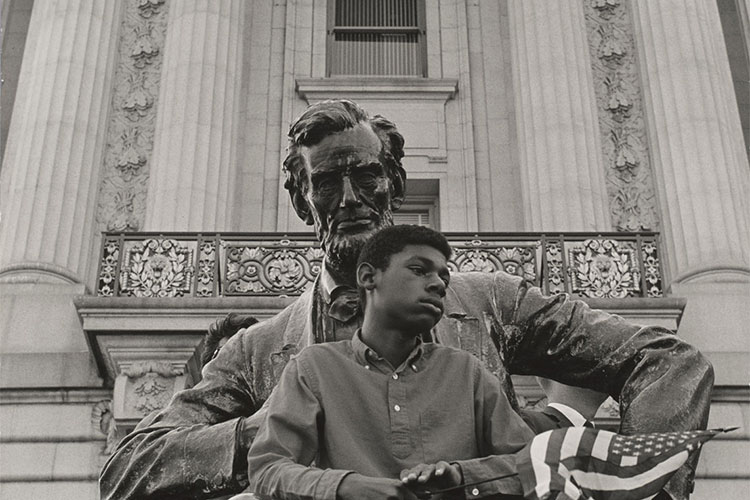Bancroft highlights new photo collection of SF’s Fillmore, civil rights history
The Bancroft Library has announced acquisition of a new collection of David Johnson photos of San Francisco's Fillmore District and the civil rights era.

March 21, 2018
“Dear Mr. Adams: I’m interested in studying photography.… By the way, I’m a negro,” wrote a young David Johnson to the legendary photographer and environmentalist, Ansel Adams, requesting a seat in Adams’s class at the California School of Fine Arts in San Francisco.
Today, more than 5,000 negatives and photographic prints by the intrepid, now 91-year-old Johnson are part of the pictorial collection of The Bancroft Library at UC Berkeley, as the institution’s first archive of an African American photographer.
After writing to Adams and eventually getting a seat in his class, Johnson left his home in Jacksonville, Florida, and arrived in San Francisco carrying an Eastman folding camera he bought for $5.
He was part of the Great Migration — an exodus of African Americans from the rural South to cities in the North and the West. Like Johnson, they had come to invest in a better future. As the San Francisco’s African American population swelled during World War II, many took up residence in the Fillmore District. So did Johnson, who later said these residents became his neighbors, fast friends and photo subjects.

The cover of a 2012 book about Johnson and his work, by his wife, Jacqueline Annette Sue. the title is Dream Begun So Long Ago. ([David Johnson photograph archive], BANC PIC 2017.001. © The Regents of the University of California, The Bancroft Library, UC Berkeley.)
Johnson knew his neighborhood but also reached well beyond it, recording protesters in the 1964 March on Washington; musicians Nat King Cole, Eartha Kitt and T-Bone Walker; poet Langston Hughes; Supreme Court Justice Thurgood Marshall; and baseball great Jackie Robinson.
He became part of the so-called Golden Decade, a select group of California School of Fine Arts students taught by luminaries like Adams, Minor White, Imogen Cunningham and Dorothea Lange, who established their own successful careers.
Presenting Johnson’s collection to the public, the Bancroft has built an website with pages displaying his work and telling his story.
A short piece headlined “In His Own Words” features a conversation between Johnson and von Euw.
Another piece produced by the Library, “Behind the Photographs,” displays a number of Johnson’s powerful black-and-white images along with video clips and written transcripts of his descriptions and explanations of each image.
Read an overview of Johnson's work and how it came to the Bancroft